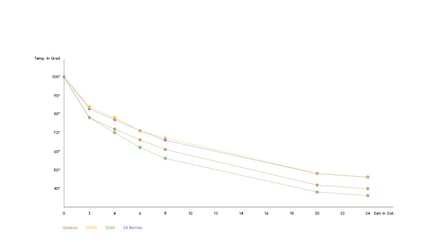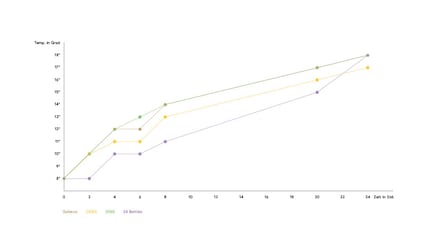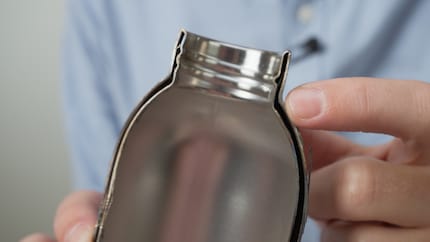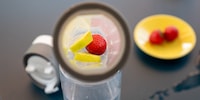
Good and cheap? Or just cheap? How Galaxus’s thermos flask fares against its competition
Is our inexpensive Galaxus flask in the same league as the top sellers? We were determined to find out so we took some precise measurements and even destroyed some test objects.
For English subtitles, click the gear icon, «Subtitles/CC» and «Auto-translate».
Recently, Galaxus’s own-brand team launched a thermos flask. At first glance, it sounds promising. It holds 500 ml and is black. Yet... it’s not that good. Our results showed that it only keeps a drink hot for eight hours. Yes, I mean «only» because Chilly’s and 24 Bottles’ flasks specify a heat retention time of twelve hours.
How’s this possible? That was the question I wanted to know the answer to. My test setup was as follows: the Galaxus thermos flask and the branded products above, plus a Swiss product. According to the manufacturer, the children’s bottle has a heat retention time of five hours.
It should therefore be easy to find out where the considerable differences come from. I bought three of each bottle. We filled one with cold water and the second with boiling hot water. I measured the temperature at equal intervals to find out which model was the best at staying hot or cold.
The result? In the Chilly’s and 24 Bottles’ flasks, the water was still almost 70 degrees after eight hours. In the Galaxus bottle, it was 61 degrees and in the SIGG bottle it was 56 degrees. Is that still «hot»? After all, 55 or 60 degrees is hot enough to destroy legionella (bacteria) and germs.

There were also measurable differences in the cold test: the bottles from Chilly’s and 24 Bottles kept the eight-degree cold water cooler for longer. In the 24 Bottles flask, it only warmed up by three degrees over the eight hours.

A question of material?
If you were paying attention above, you’ll remember that I got three bottles from each brand. We needed two from each brand for the temperature test. The third was used to inspect the materials. In other words, we had them sawn open to see what was really behind good and bad insulation. The company Analp Metallbau AG supported us in the process – thank you for that!
Thermos flasks consist of an inner and an outer layer. Between the two, there’s a vacuum. The so-called vacuum insulation prevents the hot tea in the bottle from coming into direct contact with the ambient air via the bottle wall (link in German). The vacuum between the two layers of the bottle prevents convection and the conduction of heat (or cold).

Peeking inside the four thermos flasks gave us clues as to why one insulated better than the other. The walls in the Chilly’s and 24 Bottles flasks were thicker than those of the Galaxus and SIGG bottles. That’s not all; on the 24 Bottles model especially, the insulating space reached far up into the bottle top. In the Galaxus bottle, the layers are welded together much earlier.
What do you expect from your thermos flask? What’s your experience been like with flasks? Let the Community know in the comments.
Journalist since 1997. Stopovers in Franconia (or the Franken region), Lake Constance, Obwalden, Nidwalden and Zurich. Father since 2014. Expert in editorial organisation and motivation. Focus on sustainability, home office tools, beautiful things for the home, creative toys and sports equipment.
Practical solutions for everyday problems with technology, household hacks and much more.
Show all




